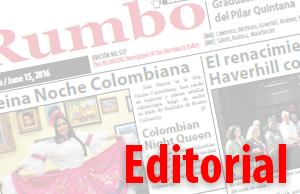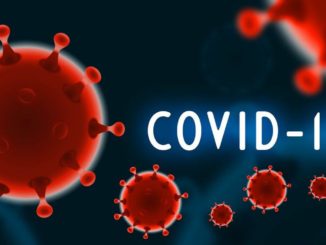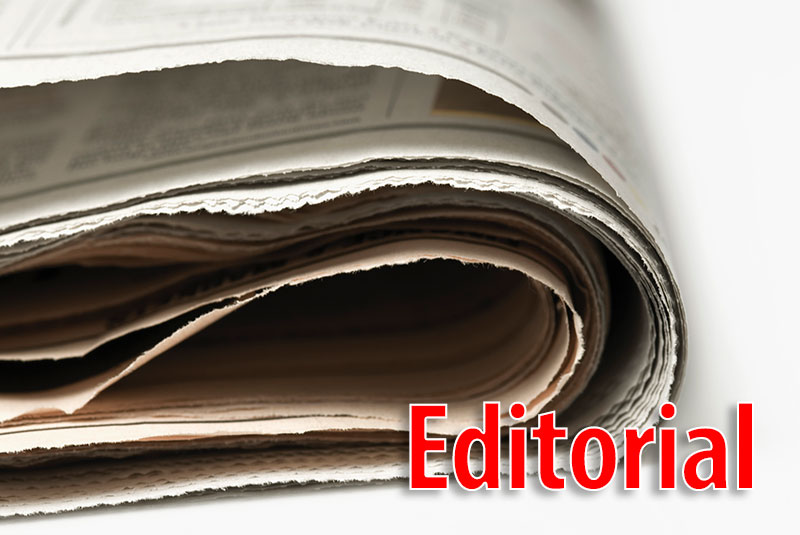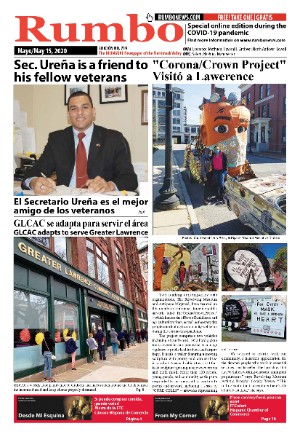
The saying is that on St. Patrick’s Day, we are all Irish and it is demonstrated by the fact that on that day we wear something green. In honor of this, once again, we decided to change Rumbo’s masthead that is usually red, even though the most important activity in the calendar of activities was not carried out, canceled due to the weather. We refer to the already famous St. Patrick’s Parade, long awaited by the community.
In our issue #526 of March 22, 2016, Charles Boddy surprised us with an article entitled “The Cuban-Irish Connection”. According to Boddy, his article arises after having conversed with several Cubans during the lunch of the Hibernians of Lawrence who confessed themselves of being ignorant of such a connection. According to Boddy, the connection between Latinos and Irish existed a long time ago and the shame of it is that most Latinos do not know.
In his article, Boddy relates the story of Éamon DeValera, the first president of Ireland. The father of Éamon, a Spanish artist named Juan, immigrated to Cuba. From Cuba, Juan immigrated to New York, where he met and fell in love with a young Irish immigrant named Catherine Coll. Its union produced Éamon that grew and was raised in Ireland, participating in the struggles of independence, where by his effort became elect president of what we know today as the Republic of Ireland.
In this edition, Boddy talks about the “Dominican-Irish Connection in History” and focuses his attention on Francisco del Rosario Sanchez, recognized as one of the three founding fathers of the Dominican Republic with Matías Ramón Mella and Juan Pablo Duarte.
In this article, Boddy recounts the adventure of Sanchez and Mella, who only 6 months after the founding of the Republic together with Duarte, were declared traitors to their own cause and expelled from the national territory. Sanchez and Mella, set out for England, shipwrecked on the coast of Ireland. Among the survivors, the Dominicans arrived in Dublin.
“Imagine the reception of the revolutionary Dominicans eager for freedom sitting at the table not by chance but by an act of God with some Irish Catholics,” says Boddy. “These Irish Catholics, treated as second-class citizens in their own country, also yearned for independence.”
Although we did not know these stories so well documented by Charles Boddy, we are not surprised by those connections.
We know of Cuban Priest Felix Varela, who in 1988, on the Bicentennial of his birth, the U.S. Postal Service printed a stamp of $0.32 on his honor.
Father Varela was assigned to a parish in New York, in the Irish section, where moved by the racial/ethnic problems of the time, he became an advocate for the rights of immigrants, especially the poor Irish immigrants.
Those who occasionally leaf through the pages of history, we find connections similar to those expressed by Boddy in his articles, which leads us to think. For example, Haiti was the first American country after the United States to gain its independence, and years later sent troops to the Civil War. The Civil War was a war against slavery in this country and Haiti, from its inception, fought for the elimination of slavery in the world and against the slave trade.
We know of the leadership of Simón Bolívar, who after freeing his native Venezuela, led with the local leaders, the independence from the Spanish yoke of Colombia, Ecuador, Panama, Bolivia and Peru.
From Europe came Guiseppe Garibaldi, an Italian general, politician and nationalist, considered one of the “fathers of the fatherland” that with his conquest of Sicily and Naples managed to unify Italy and still had time to fight for the independence of Brazil and Uruguay.
Analyzing these connections, we only have one question left. Think that in those times, we did not know the radio, television, telephone, internet, cell phone, text messages, Facebook, or twitter. The ships had sails and the planes were not known. How did they do it?




